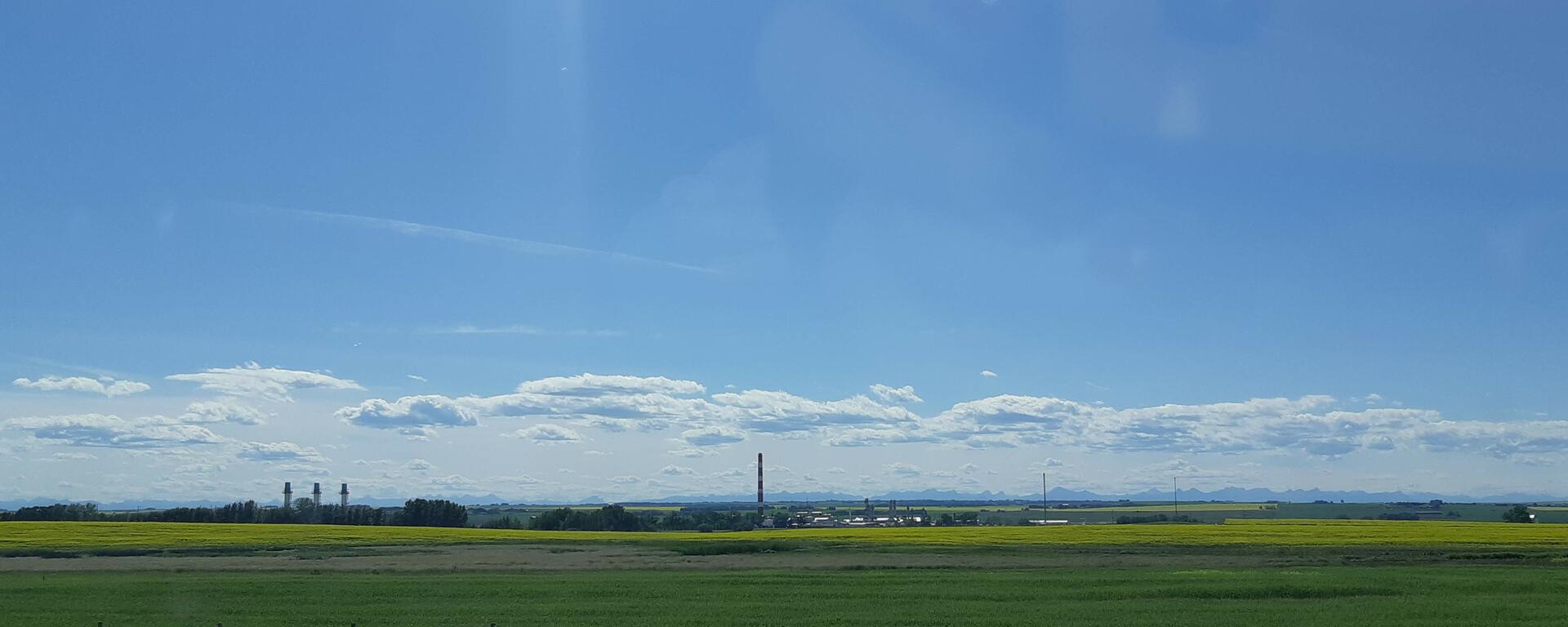Why Alberta Energy Stories?
Energy narratives in Canada depend on an oft-repeated stereotype which pits a conservative Prairie region supportive of petroleum against a more liberal and green energy-friendly Eastern and Coastal Western Canada (Shrivastava & Stefanick 2015). Yet, the dichotomous understanding of Canadian energy systems and politics masks the fact that the Prairie region’s experiences of energy are incredibly diverse: some communities depend on diesel generators, some on coal-powered electricity, others derive energy from wind and water. We have suburban neighborhoods powered by solar, and an increasing number of urban district energy systems (Chung 2019).
The polarization and essentialization surrounding Prairie energy systems greatly impacts Alberta’s major energy-producing communities, whose daily lives are often subject to stereotype and oversimplification. While there have been some studies on the history of oil sands development (Chastko 2004, Humphries 2008), amateur histories of the Leduc oil field (Hunter 1997, Chartier 2008), and research on human-environment relationships, particularly amongst Indigenous communities (Westman and Joly 2019; Westman, Joly et al 2022; Natcher and Brunet 2020 amongst others), most research on Alberta’s energy systems takes a top-down approach, centering states and corporations over people and communities.
The diversity of energy experiences in Alberta signals that broad large-scale narratives depicting our energy systems do not accurately portray the experiences and innovation of actual communities. While states, corporations, and tech developers are presumed to have ultimate power at directing energy transitions, we are increasingly seeing that the agency of communities and even individual actors, plays an important role in determining our future energy systems. Establishing how people make sense of new energy products and technologies in their lives, how they understand their energy pasts and imagine their energy futures, how they initiate change, and how new energy systems empower or disempower them, must become an integral part of discussing energy transitions. We want to know:
1) What is the role of Alberta’s communities in energy transitions?
2) What can we learn about energy transition and innovation from projects and communities that have already enacted new ways of powering their lives?
3) How can we best communicate energy systems innovation that is already occurring in order to facilitate informed public discussions in today’s society about our energy futures?
Currently, we have 4 projects that are part of the Alberta Energy Stories research program, but will be adding more in the future.
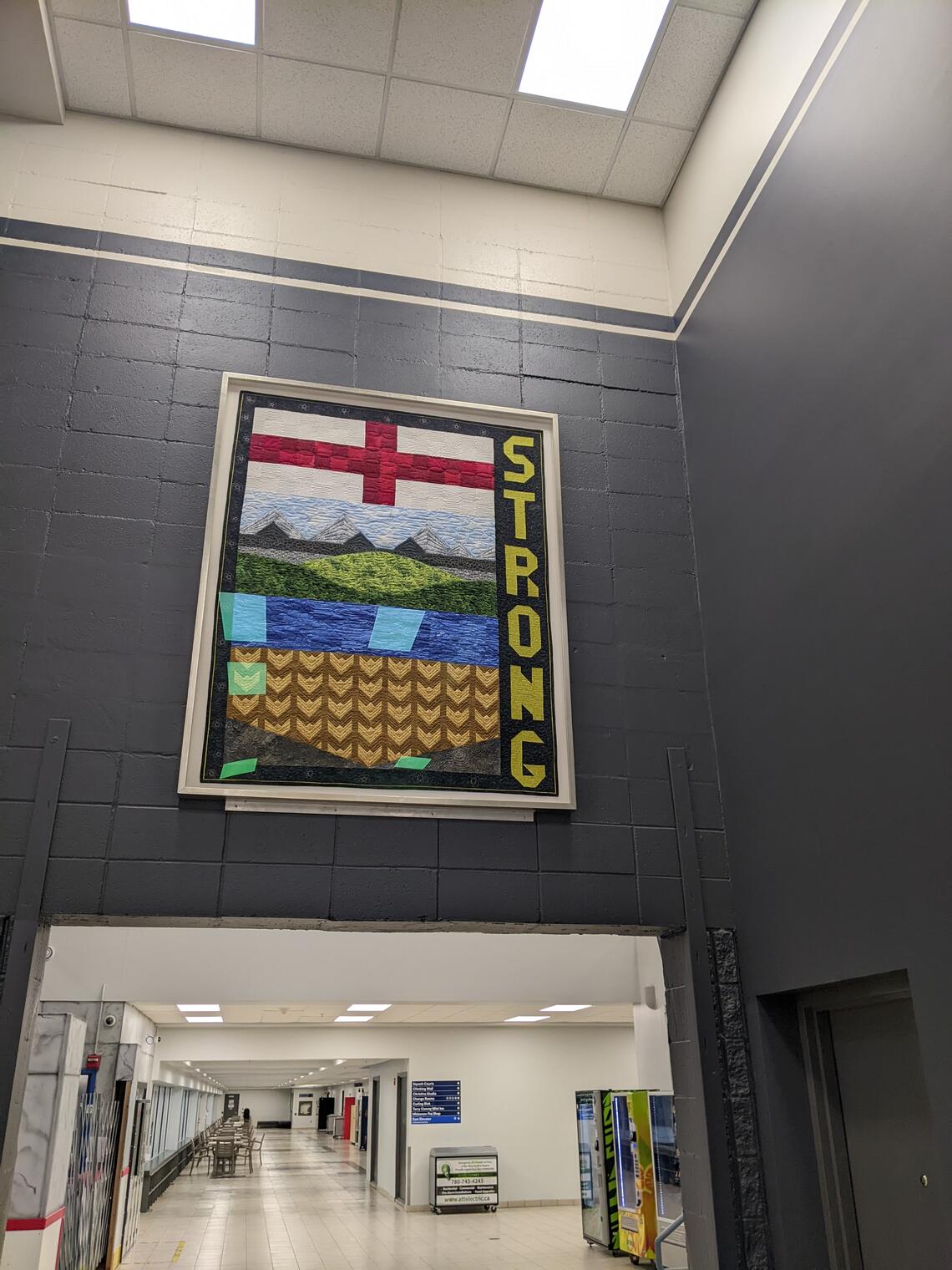
A quilt made after the Fort McMurray Wildfire in 2016, on display at MacDonald Island, Fort McMurray
Storying the Oil Sands: Community, Innovation and Politics in Northern Alberta (2022-2032)
Centred in Fort McMurray, the Energy Stories Lab’s largest project takes a bottom-up approach to Alberta’s oil sands communities, by examining Wood Buffalo Municipality residents’ relationships to their community, industry and Canada’s ongoing energy transition. Perić (PI), Leblanc (Co-Applicant) and Dolgoy (Collaborator) are embarking on a 10-year project that proposes to collect 500-1000 oral histories in the region, and also explore different ways to represent community history in the oil sands, specifically through the usage of AR, digital heritage technologies (3D laser scanning, 3D printing etc), and novel digital storytelling practices (including community-based photography and videography). This large-scale project foregrounds community, industry, and museum researchers and partnerships, and includes a major youth capacity-building component.
Rethinking Roughnecks: Gender and Energy Work in 20th & 21st century Alberta (2022-2027)
In Alberta, the ‘roughneck,’ or male oil rig worker, has been a persistent archetype. This project rethinks our view of gendered oil labour by highlighting the often invisible labour of women, and their active role in the Alberta’s energy transitions. In partnership with the Canadian Energy Museum (CEM), we have completed a pilot project AR experience that uses community-authored oral histories to re-narrate the transition to oil in Alberta, specifically the 1947 Leduc oil discovery. Over the next 5 years, this project will expand to rethink gendered labour in Alberta’s other energy transitions, including away from coal, to renewables and other forms of energy.
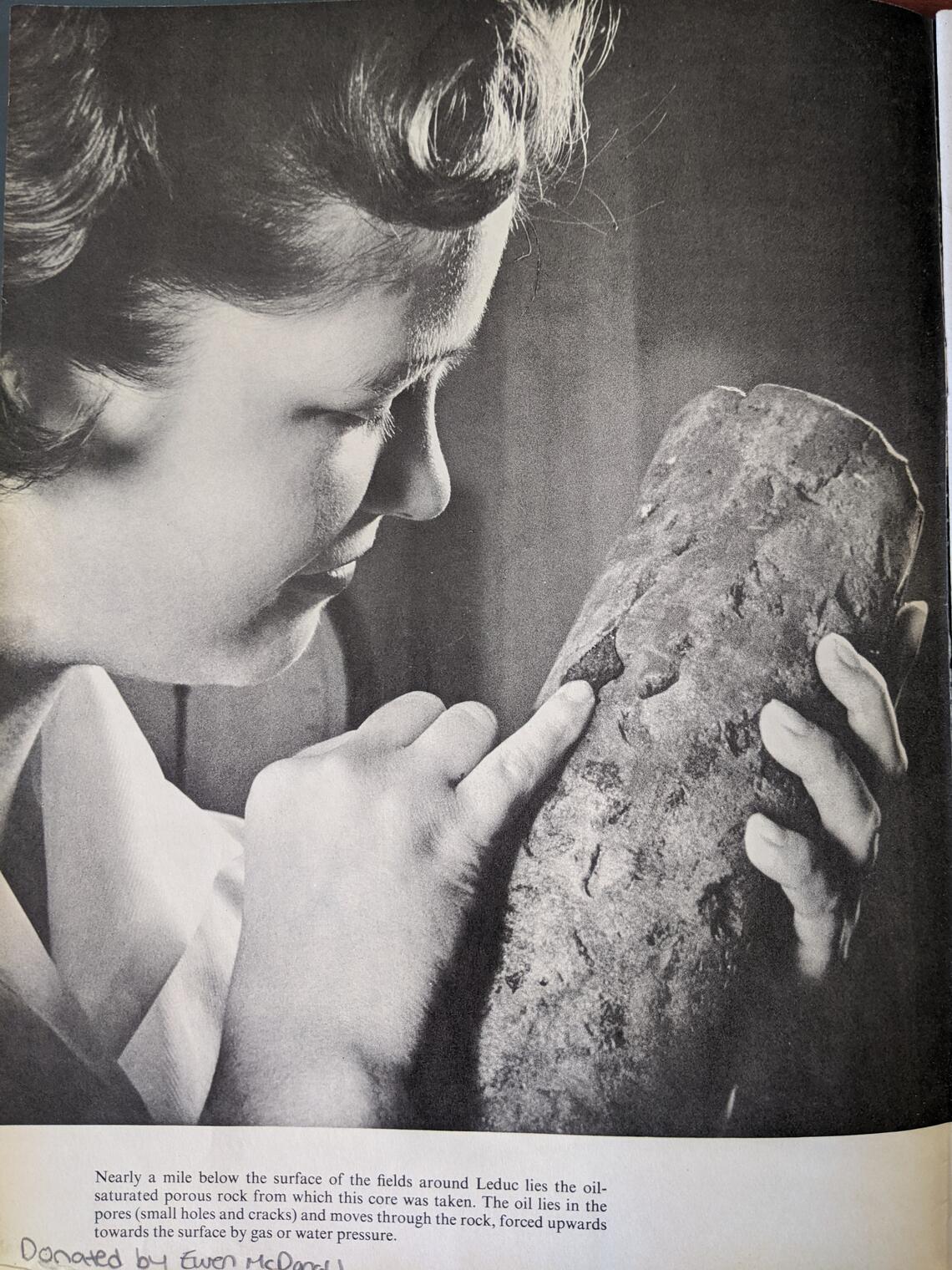
Female geoscientist examining soil from Leduc, Imperial Oil Review, October 1957
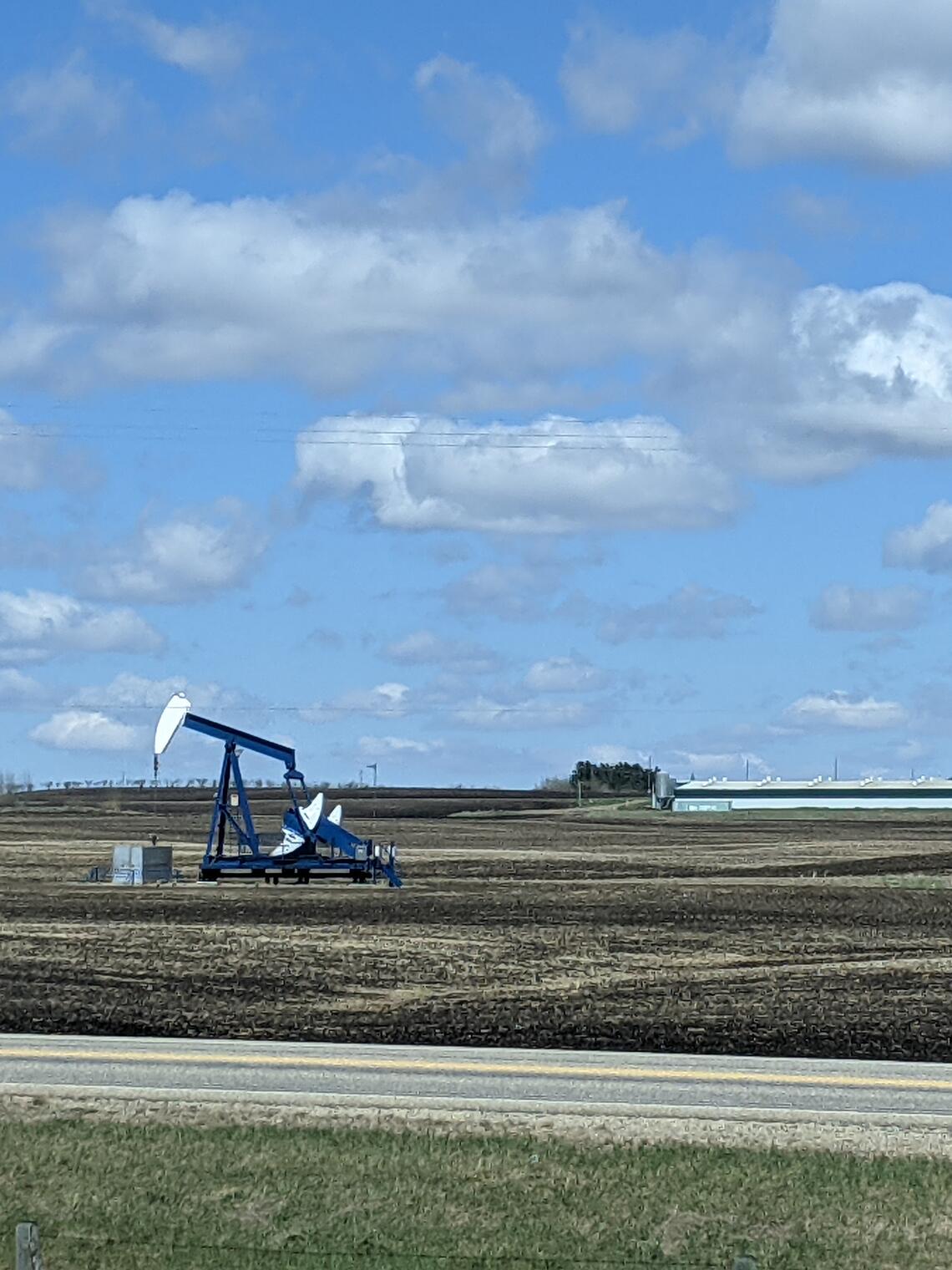
Active well along Highway 56, near Drumheller, AB
Orphan Wells AR: Creative Reclamation (2022-2026)
The constant ebb and flow of oil projects in Alberta has both built and laid waste to our communities. Orphan wells are a direct reflection of this process: while a ‘polluter pays’ principle requires companies to decommission and reclaim oil sites, many are unable to do so. The public often focuses on new technologies in energy transitions. However, remediating and reclaiming former industry sites are also critical steps. This project will investigate orphan wells in the process of reclamation in Turner Valley, employ research creation to preserve and investigate the cultural significance of oil wells, and contribute to the definition of reclamation, moving beyond environmental reclamation to include creative community-driven reclamation.
Decarbonizing Prairie Agriculture (2024-2029)
In Canada, 10% of our greenhouse gas emissions come from crop and livestock production, excluding emissions from the use of fossil fuels or from fertilizer production. As a major agricultural region, the Prairies are expected to contribute in important ways to future energy transitions and the more immediate energy targets posed by the forthcoming Sustainable Agriculture Strategy (Agriculture and Agri-Food Canada, 2023), which will contribute to the Canadian Net-Zero Emissions Accountability Act (2021). But how do Prairie farmers understand the idea of net-zero? What role do they see sustainable and/or regenerative agriculture playing in Canada’s net-zero plan for 2050? In partnership with farmers and rural municipalities across the Prairies, this project hopes to understand how the practices of sustainable agriculture and decarbonization contribute to hopes and/or anxieties for the future of Prairie agriculture.
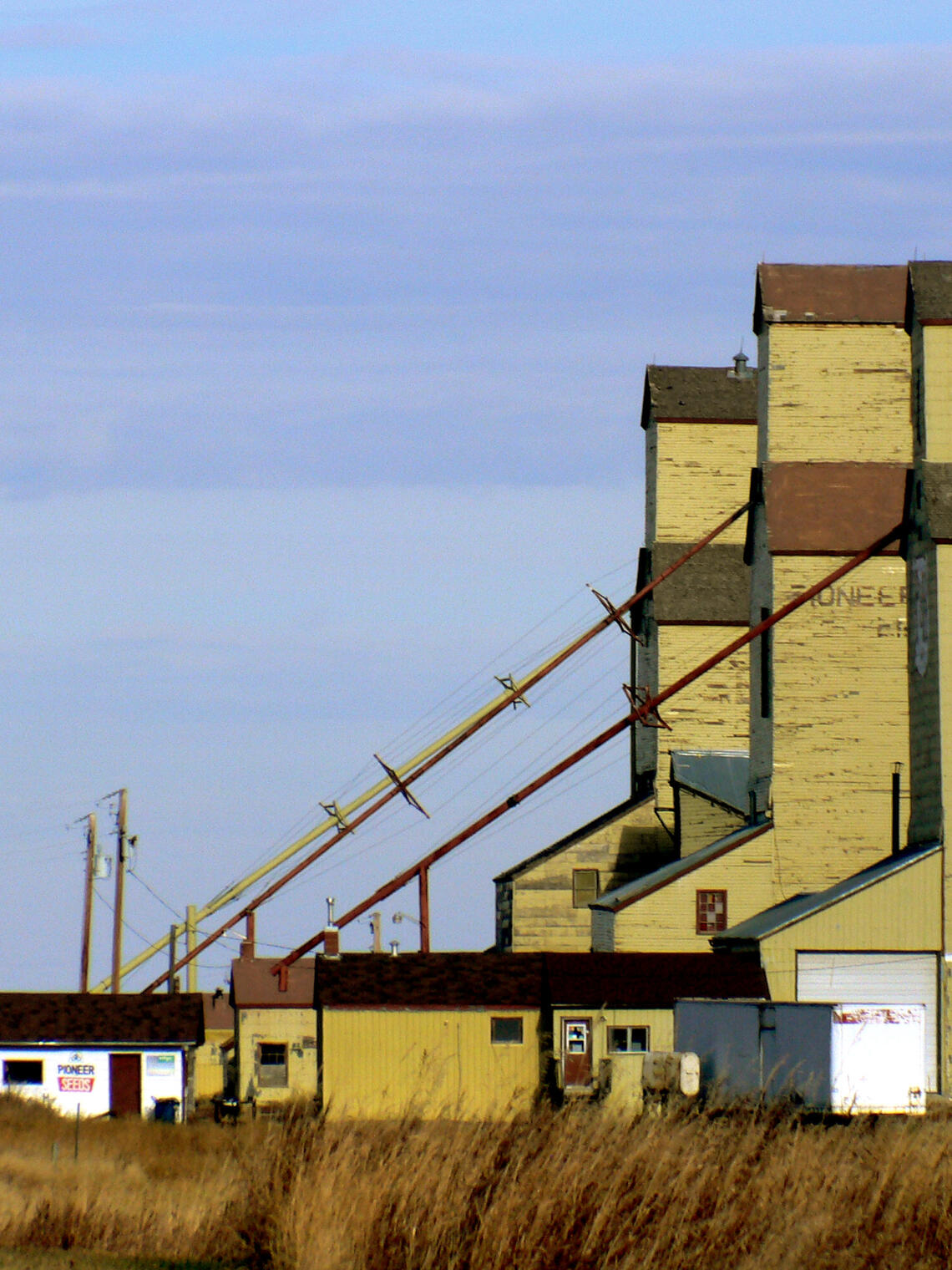
Grain elevators in Mossleigh, Alberta

